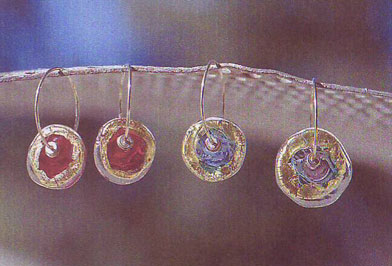Michal
Gamlieli,
after many years as a senior graphic designer, traveled
to Auckland, New Zealand, to study the art of glass
bead-making at the side of the master, Peter Viesnik.
Michal designs her creations in her glass and jewelry
studio, in Moshav Aminadav, on the outskirts of
Jerusalem, Israel. This contemporary, handmade jewelry
features beads made of Italian Moretti glass.
Each bead is individually crafted by flamework using
a technique based on that of ancient Venetian artisans.
Pure gold and silver are combined with glass in
some beads.
|

|
 |
Venice
became the major glass and beadmaking center of the
world during the Renaissance, and the secrets of glassmaking
were jealously guarded there.
In 1291, the Venetians moved the glass industry to
the island of Murano, isolating the craft and its
artists. Thus, the Venetians kept their lucrative
trade a secret.
The
art of glassmaking passed from father to son, which
made it impossible for any one outside of a glassmaker's
family to learn the craft. Glass artists were forbidden
by law to travel, and violators risked the imprisonment
of family, or pursuit and assassination. By the 16th
century some Venetian artists managed to escape to
Germany.
|
By
the early 17th century Antonio Neri, a glassmaker from
Florence, authored L'Arte Vetraria (The Art of Glass),
which was the first book to be published on the subject.
Throughout
history, handmade glass beads were esteemed as valuable
and were traded in exchange for slaves, furs, gold,
ivory, tobacco and sugar. Today, Venetian glass beads
are used in the making of distinctive jewelry and are
sought after by collectors.
Please
contact Art-Y-Choc
for available pieces for sale.
|
|
|